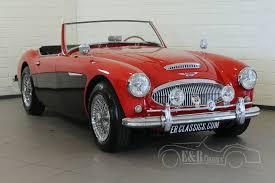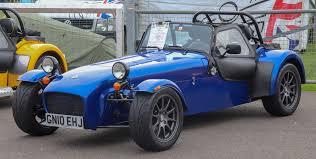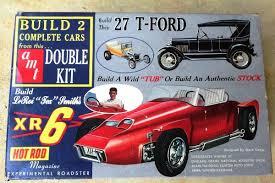-
Posts
39,340 -
Joined
-
Last visited
Content Type
Profiles
Forums
Events
Gallery
Everything posted by Ace-Garageguy
-

Potential Project?
Ace-Garageguy replied to aurfalien's topic in Model Building Questions and Answers
Honest opinion? Typical nonsense illustration done by somebody who has no clue about silly real-world things like fender clearance for suspension travel and steering, scale of components, etc. I could see a cool wide-body Superbird as a worthwhile project, but not that. -
OMG !!!!! OMG !!!!! DIGRESSION !!!!! OH, THE HUMANITY !!!!!! If Brian Stelter finds out, there'll surely be more crying.
-
Nah. Maybe the dawn of the Idiocracy though. Or the end of it.
-
Cream, 1968
-
The fact that product longevity began decreasing at about the time energy standards came into play is purely coincidental. And coincidence is not causation. Johnny's remark about being "built to break" is spot on. When I was young, the term was "planned obsolescence" and manufacturers who practiced it were reviled by the more aware segments of consumerland. The world has changed though, and not always for the better...contrary to the opinions of those who shout "Luddite" at anyone who doesn't enthusiastically embrace everything new, even if it's just plain stupid. Toms reference to "value engineering" is also dead on target. It involves uprating lower quality components and materials...essentially lying about the fitness for a particular application during the design phase...and outsourcing to "offshore" manufacturers who are notorious for further short-cutting on specs. Couple that with stateside distributors of US-branded but offshore-built junk being somewhat lax on quality control (rampant in the car-parts business), and you get "affordable" garbage products that fail early. To get my old fridge to be just as "efficient" as the new trash, all that's required is to upgrade the insulation somewhat. It was built when energy was really cheap, so wasn't insulated as well as it could have been. And over the long term, it's probably more energy-efficient to keep a happily-running older machine than to replace it every 10 years with a new one. People tend to forget that it takes rather a lot of energy to MAKE a refrigerator, too.
-

Protar Ferrari 126C2
Ace-Garageguy replied to zoomiev's topic in WIP: Other Racing: Road Racing, Land Speed Racers
Beautifully clean workmanship. -
https://www.ebay.com/itm/1-25-BBC-Gasser-Headers-Resin-MADE-TO-ORDER/383493376685?_trkparms=aid%3D1110001%26algo%3DSPLICE.SIM%26ao%3D1%26asc%3D20131231084308%26meid%3Dc2163f88e6db45a592b8fc3b8c339a98%26pid%3D100010%26rk%3D1%26rkt%3D12%26sd%3D383504033072%26itm%3D383493376685%26pmt%3D0%26noa%3D1%26pg%3D2047675&_trksid=p2047675.c100010.m2109
-
My 60+ year old GE...bought used...still works just fine, never needed anything. It doesn't hook up to the internet though, so it can't possibly be any good.
-

Marmon COE
Ace-Garageguy replied to The Brush's topic in WIP: Model Trucks: Big Rigs and Heavy Equipment
That's certainly worth a big smile. Very nicely done. -
Nice housewarming gift. Last dead tree I had to have taken out cost me around $1500. And David's correct. The neighbor should indeed have recourse if the property line was misrepresented. HOWEVER, adults who purchase property are expected to actually look at and understand the documents accompanying said purchase. It's difficult to prove "misrepresentation" if the property documentation clearly shows the property lines...which it almost certainly will.
-

'30s Air Racers
Ace-Garageguy replied to Flynlo's topic in All The Rest: Motorcycles, Aviation, Military, Sci-Fi, Figures
THANK YOU SIR !!! -
Here we go again. Methylene chloride IS dichloromethane. Same thing. CH2Cl2 Bondene. WHITE BOTTLE. Reasonably effective on garden variety ABS. Labeled as such. CHEMICAL REFERENCE: https://pubchem.ncbi.nlm.nih.gov/compound/Dichloromethane Stronger solvent than MEK MEK is Plastruct's Plastic Weld. ORANGE BOTTLE. Works on Plastruct's wimpier version of ABS. Labeled as such. Which is what I said last time (other than the reference to Plastruct's version of ABS). NOTE: ABS FORMULATIONS HAVE VARYING DEGREES OF SOLVENT RESISTANCE. SOLVENT "ADHESIVES" ALSO HAVE VARYING DEGREES OF CONCENTRATION OF THE PRIMARY SOLVENT IN THE COMMERCIAL MIXTURE, WHICH MAY CONTAIN INACTIVE DILUENTS. GREATER OR LESSER CONCENTRATIONS OF THE PRIMARY SOLVENT WILL HAVE A MARKED EFFECT ON THE STRENGTH OF THE "ADHESIVE" AND ITS ABILITY TO SOFTEN WHAT IT'S APPLIED TO.
-
Note the orange bottle front label also states it bonds "Plastruct ABS". This was the source of the confusion in an earlier liquid glue thread. "Plastruct ABS" is not, in my experience, as solvent resistant as what are commonly referred to as "engineering grades" of ABS that many consumer products are made from. The original poster in that particular thread was wanting to repair the door on a microwave, and I recommended Plastruct's Bondene (methylene chloride) for that application, as it's labeling includes generic ABS.
-
The poor little Miata has had to suffer from several other misshapen blobs of "interpretations" or "re-creations" being mercilessly stretched over it. 250 Testa Rossa: Big Healey... Lotus 7... 250 GTO...
-

1957 Reo Gold Comet
Ace-Garageguy replied to Chariots of Fire's topic in WIP: Model Trucks: Big Rigs and Heavy Equipment
I always enjoy watching your work. This one looks like a real challenge. Fascinating, and inspirational. -

What’s this frame from?
Ace-Garageguy replied to NOBLNG's topic in Model Building Questions and Answers
-
Too bad Geely doesn't make a sports car with an obsolete farm implement engine. Call it an Austin-Geely.



